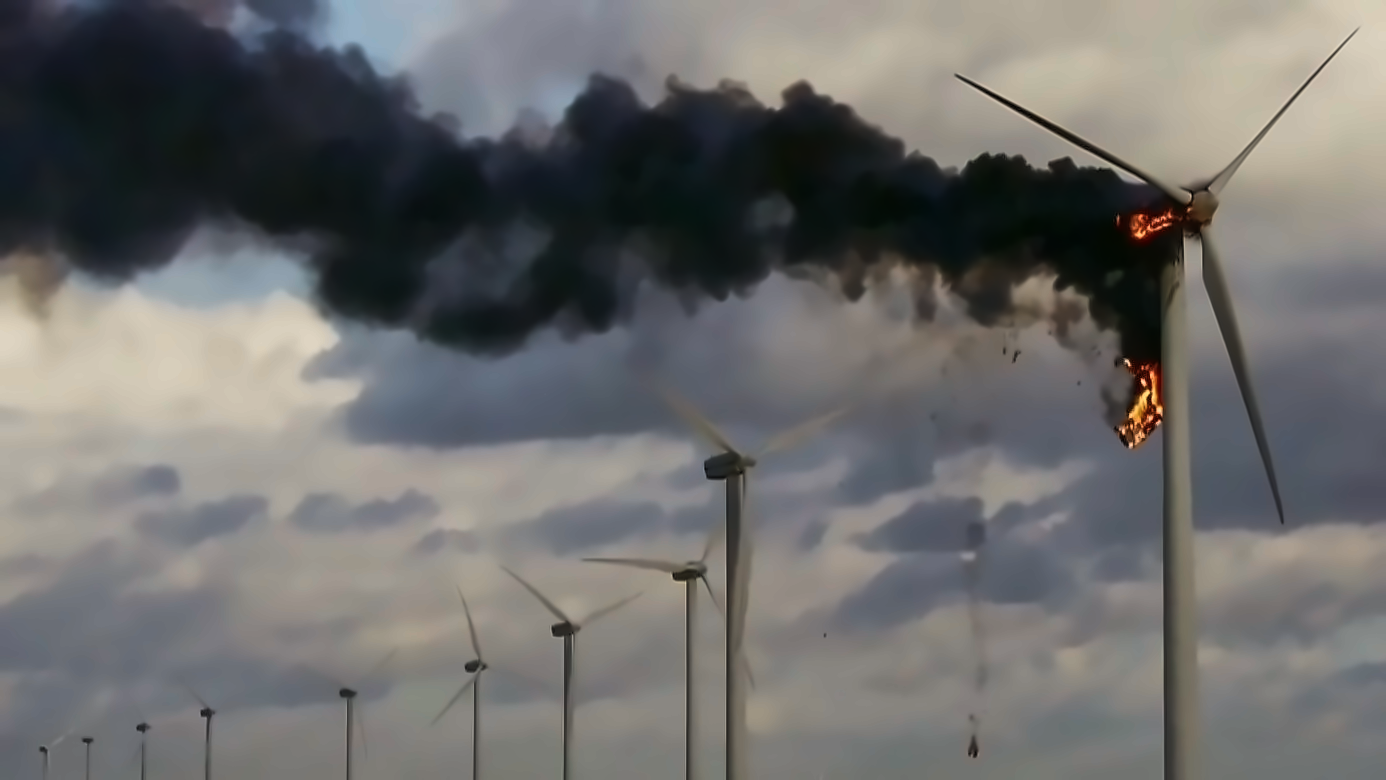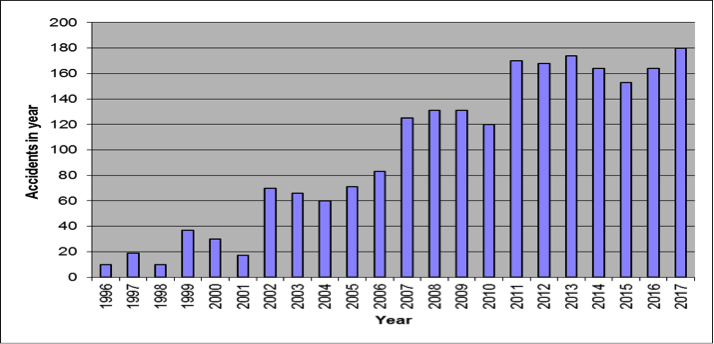Wind Turbine Worker Safety - the Human factor
Wind power continues to be a growing driver for renewable energy. The United States currently boasts 90,004 MW of cumulative installed wind capacity; more than 54,000 wind turbines are operating in 41 states, plus Guam and Puerto Rico, with over 1,000 MW already installed in 2018. There are now 18,987 MW of wind capacity under construction, and 18,806 MW in advanced development. The combined 37,794 MW represent a 46 percent year-over-year increase - a 13 percent increase over the previous quarter5.
Today, the U.S. wind industry powers more U.S. families and businesses than ever before, and employs a record 105,500 men and women across all 50 states5. With increased deployment of equipment, there is increased focus on measures to ensure safety for workers, and the public.
Wind turbine manufacturers already take safety very seriously. Many have instituted training programs for technicians1. They are beginning to utilize the promise of camera-equipped drones for inspection. Yet, until recently, there have been no standardized training programs4. As wind turbine development accelerates, more technicians will be needed to perform hands-on work during the construction, maintenance, and demolition of wind turbines.
 In April of 2018, The American Society of Safety Professionals, in conjunction with the American National Standards Institute (ANSI), issued the first U.S. industry consensus standard (ANSI/ASSP A10.2) written specifically for the construction and demolition of utility-scale, land-based wind generation/turbine facilities.2This standard mandates a more rigorous planning program for companies to ensure worker safety.
In April of 2018, The American Society of Safety Professionals, in conjunction with the American National Standards Institute (ANSI), issued the first U.S. industry consensus standard (ANSI/ASSP A10.2) written specifically for the construction and demolition of utility-scale, land-based wind generation/turbine facilities.2This standard mandates a more rigorous planning program for companies to ensure worker safety.
Many factors impact wind turbine worker safety. Dramatic mechanical failures, such as fires, are relatively infrequent - around 50 each year across a 300,000-strong international fleet of wind turbines (a rate of 1:6000).3 Yet, when it comes to worker safety, the most critical element to understand is the 'human factor'.
It is well known that, when a technician is up on the nacelle handling some mechanical break or replacing a small part, with hands covered in oil or grease, he may become distracted for many reasons. He may have forgotten to bring a tool with him; he may slip and break a wrist or arm, or worst case, fall from his platform. Imagine doing a task, even a well-known, often repeated task, when you're 100 meters (200 feet) above ground, working in a very small area - if you drop a tool, you won't be getting it back anytime soon. Technicians are under enormous pressure and tension. Also, given the remote location of many wind farms, successfully deploying rescue teams to reach injured workers can be difficult and time-consuming, especially when every second counts.
ROADBLOCKS TO SAFETY AWARENESS
Currently, there is no North American database documenting specific wind farm technician accidents; there's no way to obtain a specific accident forecast or probabilities. No other energy industry works with such secrecy regarding incidents. This is because the wind industry "guarantees confidentiality" of incidents reported. Please refer to https://www.renewableuk.com/page/RISE
In the UK, for example, the Health and Safety Executive (HSE) does not currently have a database of wind turbine failures, on which they can base judgments on the reliability and risk assessmentsfor wind turbines. Please refer to http://www.hse.gov.uk/research/rrpdf/rr968.pdf.
Although there is a general model (as presented by GWO) of the safety pyramid, it is always repeated that we don't know what to do with regard to electrical safety. There are no risk assessments and, generally, no specific data for small accidents that occur; we have no basis for probability of being injured while
Statistics about accidents that happen at home illustrate that even the easiest daily task can be very dangerous. In the UK alone in 2007, nearly 2.7 million people were injured in a home accident [source: RoSPA].
Out of 8,800 wind turbines in UK, 180 accidents were reported. If we extrapolate this data to the number of turbines in the United States ( > 54,000) we may estimate over 1,100 accidents during 2017, with over 800 accumulated fatalities from 2000 to 2017.

Fatal accidents - Number of fatal accidents: 137 [from 2000 to 2017 only in the UK]
(statistics are copyright Caithness Windfarm Information Forum 2018)
- Without routinely collecting the all accidents data and reporting to a general database, we will not have any possible way to assess the risks of working on a nacelle, or determining which measures might best improve safety.
- Evacuating a person from the nacelle should be executed so that, at a minimum, first aid will be available before the injury can deteriorate.
- We need industry standards for accessories available when working on the nacelle, such as: protective work outfit, special shoes, gloves, protective glasses, helmet, fall arrest, life line, nacelle-based First aid kit, and pre-installed tool box suited for working at heights.
Given the anticipated expansion of wind farms worldwide, worker safety must remain in the foreground. Establishing a standard, such as ANSI/ASSP A10.21, is a very promising development, as it calls for companies to assess risks to their technicians and other workers and institute formal safety plans and programs.
 Doron Fuchs, B.Sc. is Head of Professional Solutions Division for SkySaver Rescue Ltd., a company dedicated to the research, development and manufacturing of safe and intuitive emergency evacuation solutions. Doron has 30 years of engineering background, and experience working with companies like IBM, Comverse and Elron Group. SkySaver's products have received numerous certifications, and have been tested for compliance with multiple safety regulations, including CE, ANSI, NFPA, ASTM International and TUV.
Doron Fuchs, B.Sc. is Head of Professional Solutions Division for SkySaver Rescue Ltd., a company dedicated to the research, development and manufacturing of safe and intuitive emergency evacuation solutions. Doron has 30 years of engineering background, and experience working with companies like IBM, Comverse and Elron Group. SkySaver's products have received numerous certifications, and have been tested for compliance with multiple safety regulations, including CE, ANSI, NFPA, ASTM International and TUV.
SkySaver Rescue Ltd. | www.skysaver-wtg-safe.com
1http://aeasseincludes.assp.org/professionalsafety/pastissues/057/02/044_049_F1Slaven_0212.pdf
3 http://www.gcube-insurance.com/en/news-en/technical-topic-tackling-turbine-fires/
5American Wind Energy Association U.S. Wind Industry Second Quarter 2018 Market Report
Volume: 2018 September/October









